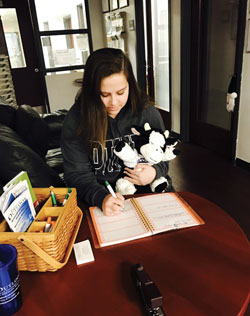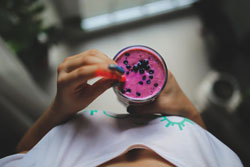The job title “influencer” is pretty self-explanatory. Influencers try to, you guessed it, influence their fans, followers, and viewers. Most commonly, influencers attempt to persuade internet users into purchasing specific products or services. But do all influencers have their fans’ best interest at heart, or are they just looking after their paycheck?
Our society is already materialistic, but with influencers constantly shoving new products down users’ feeds, overconsumption is the lates trend. Overconsumption, or consuming something in excess, is extremely wasteful, and social media makes people feel as though they never have enough.
However, not all content creators can get behind the influencing trend. Recently, creators have been posting “de-influencing” videos. These posts directly counter popular trends and products as creators try things out and explain why some are not worth the hype.
There have been a number of times I impulsively bought products because influencers convinced me they would change my life. Spoiler alert: they did not. So, here is a list of popular products that you should definitely not purchase:
- Bloom Nutrition Greens
I swear every single content creator has been sponsored to promote Bloom. Bloom Greens is a powder that acts as a greens supplement that is supposed to help with bloating and immune health. Greens is a fine product, but not for $40. Sure, it helps with digestion, but so does eating vegetables. I honestly can’t even explain why I bought these other than I saw them so much in my social media feed that they started to seem like a necessity for my daily life. Additionally, if you hate the taste of vegetables, I guarantee just the smell of these greens will make you nauseous. - Charlotte Tilbury Contour Wand
This contour wand is another $40 investment that I struggle to justify. Charlotte Tilbury blew up across social media for her Flawless Filter Foundation, Beauty Light Blush Wand, and most notably, the Hollywood Contour Wand. This product is not awful, but with how many accolades it has received, I was expecting something much better. The packaging is messy, there are only two shades, it blends down very light, and tends to lift base makeup that’s under the product. It’s a ‘no’ from me. - Benefit’s BeneTint
While we’re on the topic of makeup, Benefit’s BeneTint is also not worth the price tag. BeneTint is a tinted cheek and lip stain that runs from $21 to $33. Like the Charlotte Tilbury contour wand, it’s overpriced and overhyped. BeneTint is difficult to blend, has limited shades, and also lifts base makeup. Save your money. - Stanley Cup
Stanley cups blew up on TikTok and Instagram, but I’m not really sure why. Stanley’s are oversized, bulky cups that cost upwards of $45.
Kirsten Cluett, a sophomore health studies student and owner of the famous cup, shared, “It is a really good cup, and it holds a lot of water which is great. It’s just not worth the price, especially when other brands have cups with similar designs for cheaper. There’s just a brand name on it that makes it worth the hype.” - Smile Direct Club Teeth Whitener
I think almost all of us have seen at least one influencer promote blue light teeth whiteners. Smile Direct Club, in particular, tends to have the most paid partnerships across social media platforms. Having an at-home teeth whitening kit sounds great in theory, but it can have some adverse effects. An article written for Dental Health Society by their staff lists “tooth sensitivity and irritation of the gums and lips,” as some effects of at-home teeth whitening. The article goes on to say a lot of at-home teeth whitening kits, especially ones that use LED blue lights, usually end with lackluster results.
When surfing the web, it’s important to be aware that companies are paying content creators to influence consumers. Even if posts do not explicitly say “paid partnership,” influencers may not always give an authentic review in order to receive more sponsorships or appear more likeable.
It is also important to note that almost all the products I listed are available on Amazon. The Amazon Influencer Program, as defined on Amazon’s website, “gives [influencers] the tools [they] need to select the best of Amazon’s products and services, easily recommend them to [their] followers, and earn commissions on qualifying purchases.”
If you ever wondered why so many influencers are constantly pushing “Amazon must haves” or “the best Amazon finds,” this is probably the reason. Creators will make their own Amazon storefronts and promote products in order to persuade consumers to buy off their storefront. In doing so, the influencer receives part of the profit.
Although I have found some great products online, I have been scammed quite a number of times by influencers who do not actually care about what they are promoting so long as they are making money off my purchases. Don’t always give into the hype for the products you see online!




